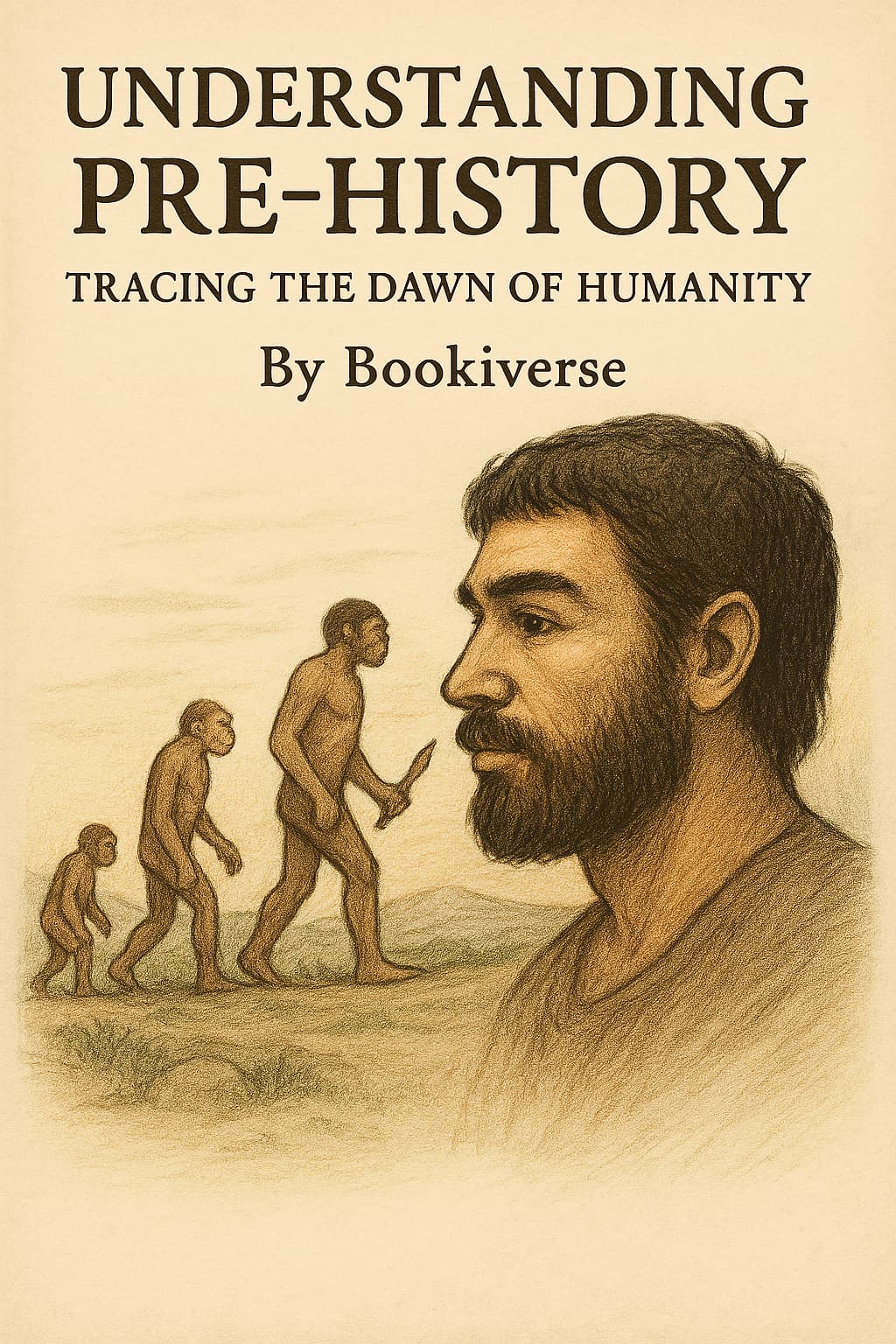Good morning, everyone.
Today’s lecture will take us far back—long before written records, before organized states, and even before settled life. We will journey through Pre-History, the vast and fascinating period of human existence that preceded recorded history. Though often overlooked in academic studies, pre-history forms the very foundation of who we are today, biologically, socially, and even psychologically.
Let us begin by clarifying what we mean by "pre-history." The term refers to the time before the invention of writing systems—an era that stretches from the appearance of the first hominins, some 6 to 7 million years ago, to the emergence of early civilizations around 3000 BCE. The key distinction here is the absence of written records. This does not mean pre-historic humans had no culture, beliefs, or technologies. On the contrary, archaeological evidence reveals a rich tapestry of life, thought, and innovation.
Pre-history is typically divided into three main periods: the Paleolithic, Mesolithic, and Neolithic ages. Each of these stages marks significant developments in human behavior and technological sophistication.
Let’s start with the Paleolithic Age, also known as the Old Stone Age. This period spans from roughly 2.5 million years ago until about 10,000 BCE. It is during this era that Homo habilis, the “handy man,” first appeared. These early humans began shaping basic stone tools—simple, yet revolutionary inventions that gave them new ways to interact with their environment. Over time, we see the rise of Homo erectus, known for their greater physical endurance and, perhaps most importantly, the controlled use of fire.
Fire changed everything. It provided warmth in cold climates, protected against predators, and allowed early humans to cook food, which in turn helped with digestion and brain development. By the end of the Paleolithic era, Homo sapiens—our own species—had emerged. With them came more sophisticated tools, the development of spoken language, and symbolic expression. This is the era of the first known artworks—cave paintings in places like Lascaux in France or Altamira in Spain.
Following the Paleolithic, we encounter the Mesolithic Age, or Middle Stone Age, which served as a transition between the hunter-gatherer lifestyle and the agricultural societies of the Neolithic. This period varies regionally but generally spans from about 10,000 BCE to around 8000 BCE. During the Mesolithic, people began to develop more refined tools and adapt to changing environmental conditions following the Ice Age. Fishing and semi-permanent settlements became more common. We also observe a growing sense of social organization, although it remained relatively simple compared to later periods.
Then comes the Neolithic Age, or New Stone Age, which begins around 8000 BCE. This is perhaps the most transformative period in pre-history. For the first time, humans shifted from nomadic life to settled agricultural communities. This transition—known as the Neolithic Revolution—marks a turning point in human history. People began to cultivate crops and domesticate animals. Permanent settlements grew, leading to population increases and, eventually, the formation of villages and proto-cities.
Why does this matter? Because with agriculture came surplus food. With surplus food came division of labor. And with division of labor came the foundations of modern society: economic systems, social hierarchies, religious institutions, and eventually, writing and recorded history.
Neolithic people also made significant technological advances. Pottery became widespread. Tools became more specialized. There’s evidence of early architectural planning in sites like Çatalhöyük in modern-day Turkey—a large Neolithic settlement with interconnected houses and wall paintings. Spiritual beliefs became more complex, as shown in the construction of megalithic monuments like Stonehenge. These indicate ritual practices and a conceptual understanding of time and astronomy.
One question that often arises is: how do we know all of this if there were no written records? The answer lies in archaeology and anthropology. Through careful excavation and analysis of artifacts—stone tools, bones, cave art, burial sites—scholars reconstruct the lives of prehistoric humans. Modern technologies like carbon dating, DNA analysis, and even satellite imaging now allow us to examine ancient remains and environments with astonishing precision.
Another key aspect of studying pre-history is understanding human migration. Pre-historic humans were incredible travelers. From Africa, the birthplace of our species, Homo sapiens gradually spread to Europe, Asia, Australia, and eventually the Americas. This migration was not random; it was driven by climate, resource availability, and evolving human ingenuity. Every step brought cultural and technological adaptation.
Now, let’s briefly touch on some of the challenges in interpreting pre-history. Without written sources, interpretations are always tentative and subject to revision. A single discovery can reshape entire theories. Additionally, the archaeological record is incomplete; organic materials decay, and only a fraction of human artifacts survive. We must approach pre-history with both curiosity and caution, acknowledging the limits of our knowledge while remaining open to new insights.
To conclude, pre-history is not just a vague period of primitive survival. It is a complex, dynamic, and foundational era in human development. It teaches us that the traits we often think of as modern—creativity, cooperation, adaptability—have deep roots in our distant past. Understanding pre-history enables us to see the long arc of human evolution, from fragile beginnings to the complex societies we live in today.
As university students, especially those studying history, archaeology, or anthropology, grasping the essence of pre-history is essential. It reminds us that civilization is not merely built on progress but also on survival, innovation, and the shared human experience across time.
Thank you for your attention. I look forward to our discussion and your questions.
